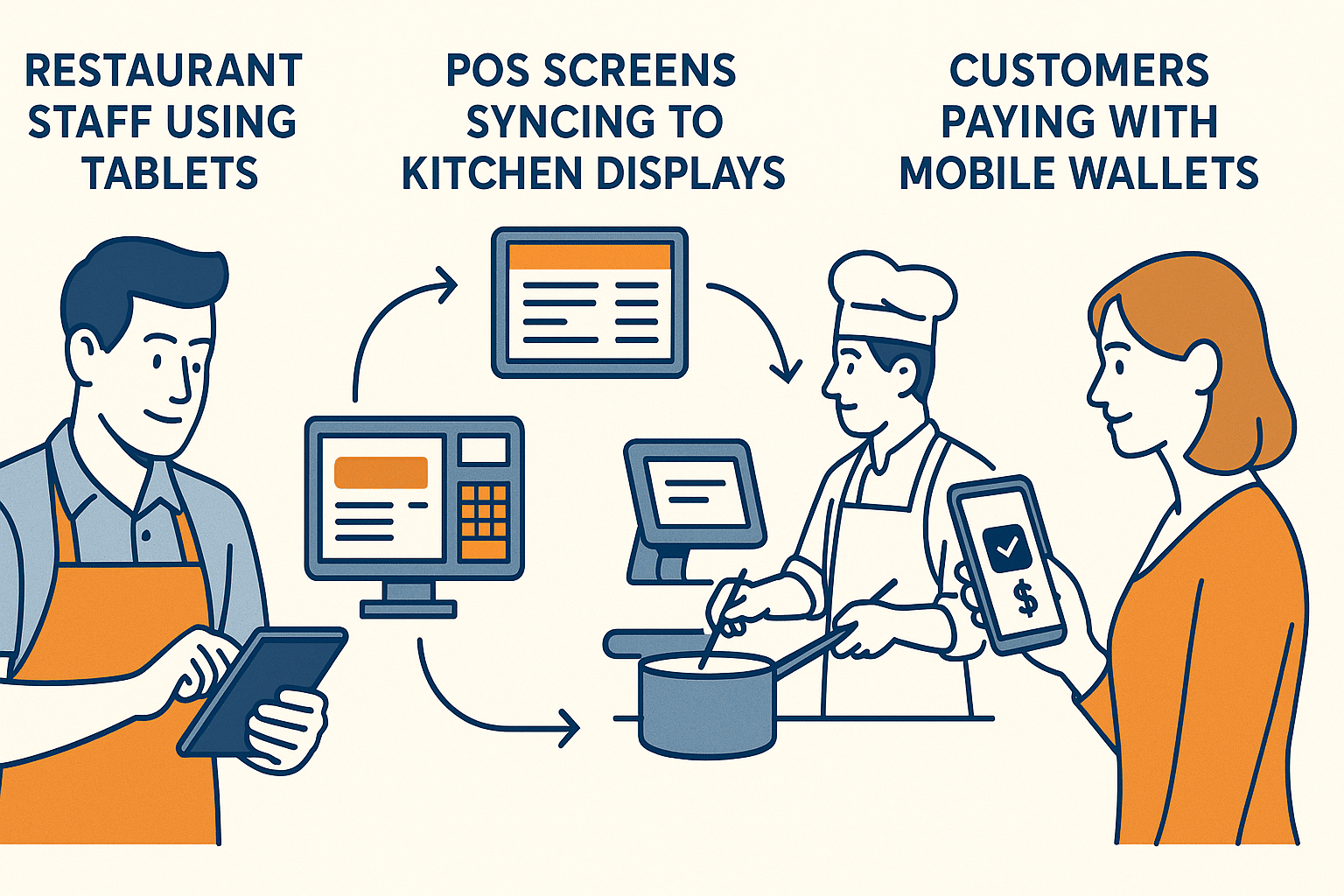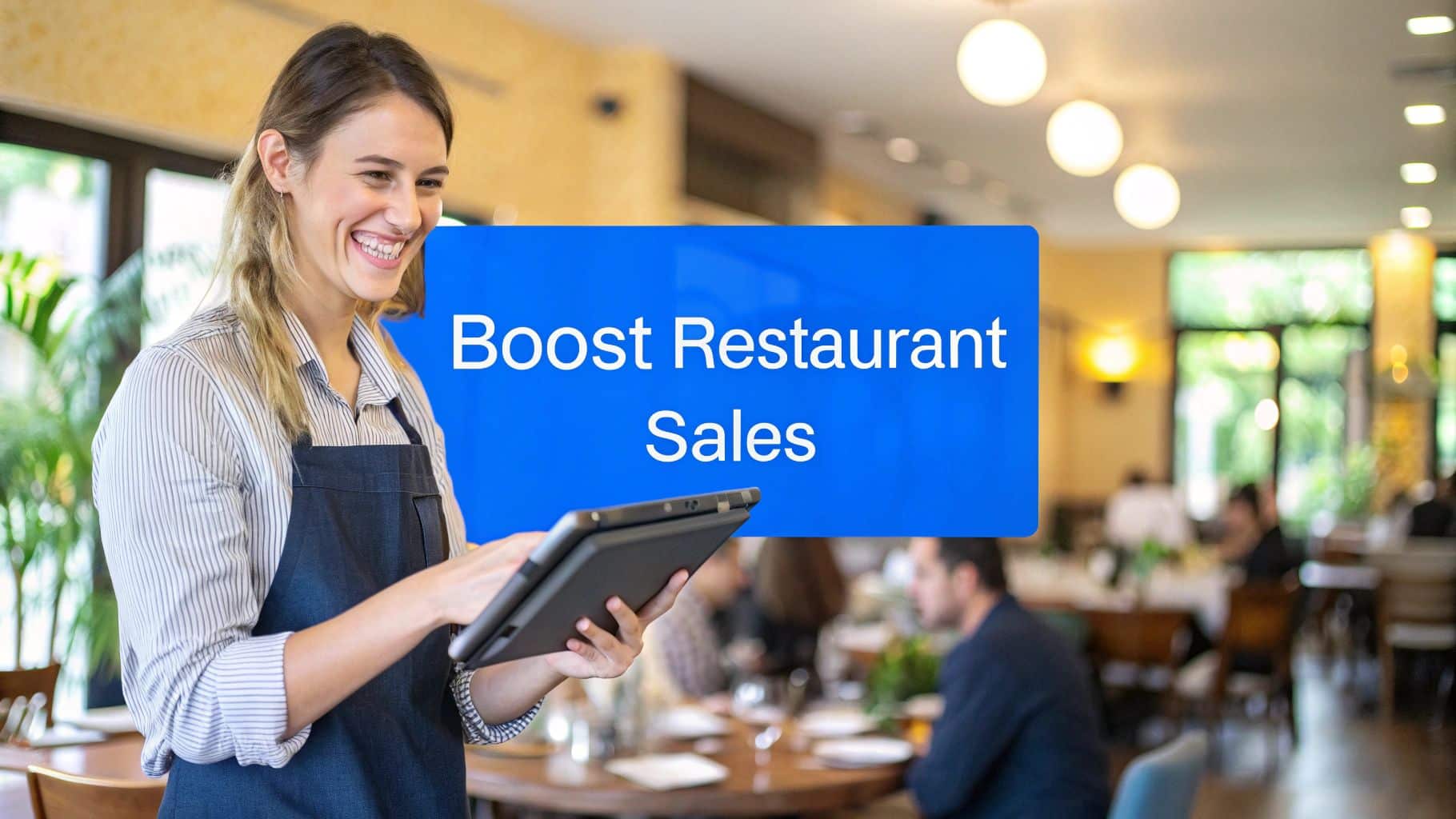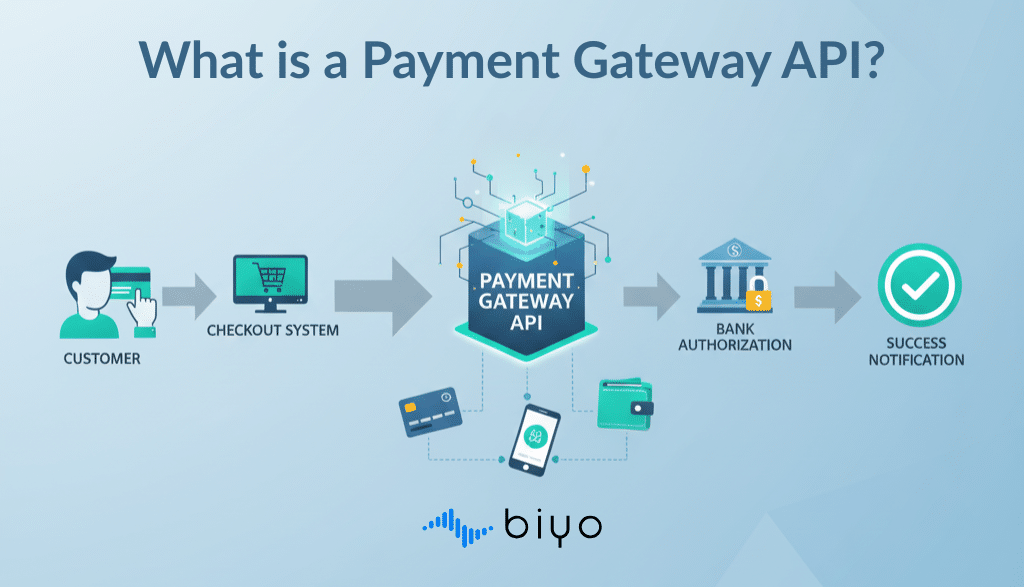Running a successful restaurant today requires more than great food and attentive service. To stay competitive, owners and managers need technology that keeps operations streamlined, costs under control, and customers satisfied. One of the most powerful tools modern restaurants are adopting is a cloud-based point-of-sale (POS) system. The benefits of a cloud-based POS for restaurants go far beyond simple payment processing. From real-time reporting and mobile POS flexibility to menu synchronization and staff scheduling, these systems transform how restaurants operate. In this guide, we’ll explore the advantages in detail and show why cloud-enabled solutions are now essential for restaurant success.
Table of Contents
- Boosting Efficiency and Streamlined Operations
- Flexibility, Remote Access, and Scalability
- Integration with Modern Restaurant Technology
- Enhancing Customer Experience and Loyalty
- Financial Insights, Security, and Cost Control
- Frequently Asked Questions
Boosting Efficiency and Streamlined Operations
Restaurants thrive when service is fast, accurate, and consistent. Cloud-based POS systems are designed to optimize workflows so teams can deliver meals with fewer errors and better coordination. The benefits of a cloud-based POS for restaurants start with operational efficiency, helping owners reduce stress and improve day-to-day execution.
Kitchen Display Integration for Faster Service
One of the most noticeable improvements cloud POS provides is seamless kitchen display integration. Instead of juggling paper tickets or misheard orders, the system automatically sends requests to the kitchen in real-time. This reduces delays, eliminates confusion, and ensures that the right meals reach the right tables. Staff can also track order progress directly on the system, giving servers confidence when communicating with guests.
Restaurants that handle large volumes of takeout or delivery particularly benefit from this setup. Orders placed through online platforms feed directly into the POS and then into the kitchen display. This integration prevents double entry, saving time and avoiding costly mistakes. When speed is critical, digital workflows powered by cloud systems make the entire process more reliable and transparent for both the staff and customers.
For managers, kitchen display integration also makes it easier to identify bottlenecks. They can monitor preparation times, track high-demand items, and make adjustments to staffing or menu design to boost efficiency. This level of insight helps improve planning for busy nights and holiday rushes. By replacing outdated ticketing systems with smart, connected displays, restaurants unlock smoother communication and greater accuracy across every order.
Over time, the ability to review past order trends allows chefs and managers to identify peak times for specific dishes and better plan inventory. This not only reduces waste but also makes sure the restaurant always has the ingredients for popular meals. In short, kitchen display integration delivers both immediate speed and long-term operational benefits.
Staff Scheduling Made Simple
Staffing is one of the most complex aspects of restaurant operations. A cloud-based POS takes the guesswork out of scheduling by providing integrated tools to assign shifts, track hours, and even forecast labor needs based on sales data. Instead of juggling spreadsheets, managers can manage everything in one central system. Employees also benefit from being able to view schedules remotely through their phones or tablets, giving them flexibility and reducing miscommunication.
When schedules are accessible online, staff are less likely to miss shifts or misunderstand assignments. Automated alerts and reminders can also reduce no-shows and improve accountability. This helps maintain consistent service quality even during peak times. For restaurants operating in multiple locations, a cloud-based POS system allows centralized scheduling, ensuring consistent labor allocation across the business without creating confusion.
Ultimately, the system helps managers balance labor costs against revenue in real time. With the right data, scheduling decisions become strategic instead of reactive. This control reduces unnecessary overtime, lowers labor costs, and improves overall profitability without sacrificing service quality. Staff members also feel more empowered because the scheduling process is fair and transparent, leading to better morale and retention.
Because schedules can be adjusted on the fly based on sales patterns, restaurants can avoid being either under- or over-staffed. This balance is crucial in maintaining smooth operations and keeping costs in check. With cloud POS scheduling tools, labor management shifts from being a headache to being a strategic advantage.
Inventory Tracking and Menu Synchronization
Inventory management has long been a pain point for restaurants. Running out of popular items or over-ordering ingredients can harm both profits and customer experience. A cloud-based POS simplifies inventory tracking by automatically updating stock levels as sales occur. This gives managers a real-time view of what’s on hand and what needs to be reordered, creating a proactive instead of reactive approach to supply management.
Menu synchronization works hand in hand with inventory tracking. When ingredients are low, the system can adjust the menu to reflect what’s actually available. For example, if a dish becomes unavailable, it is removed instantly from both in-house and online ordering platforms. This prevents customer disappointment and ensures smooth service without awkward explanations at the table or frustration with delivery apps.
By integrating suppliers into the system, restaurants can even automate purchase orders when inventory drops below certain thresholds. This eliminates guesswork and ensures a steady flow of fresh ingredients. Automated alerts also reduce the risk of human error in stock monitoring. Together, inventory tracking and menu synchronization help restaurants avoid waste, reduce food costs, and deliver consistent customer experiences.
When paired with sales analytics, inventory tools can also highlight which menu items drive the most revenue. Managers can then refine menus to maximize profitability while ensuring ingredient availability. This level of insight ensures that restaurants not only keep their shelves stocked but also optimize offerings for financial success.

Flexibility, Remote Access, and Scalability
The food service industry is constantly evolving, and restaurants must adapt quickly. A major benefit of a cloud-based POS for restaurants is the flexibility to access data, make updates, and scale operations without being tied to one location or device.
Remote Access for On-the-Go Management
With traditional POS systems, managers often had to be physically present at the restaurant to pull reports or adjust menus. Cloud-based POS technology changes this dynamic completely. Owners can log in from a laptop, tablet, or smartphone anywhere in the world. This remote access allows them to monitor sales, labor, and inventory in real-time, even while traveling or managing multiple locations.
For multi-unit operators, this is especially powerful. Instead of calling each manager for updates, they can view consolidated dashboards instantly. This level of oversight allows leaders to make informed decisions quickly and respond to issues as they arise. Whether it’s checking staff performance or evaluating sales promotions, the data is always within reach, giving managers peace of mind and agility.
Remote access also supports hybrid working models for administrative staff. Accountants, marketing teams, and area managers can all collaborate without needing to be onsite. This keeps restaurants agile and ready for change while maintaining full control over key operations. Managers no longer need to be tied to the office; they can run their businesses from virtually anywhere with internet access.
For emergencies, this feature is especially valuable. If a system error, staff issue, or supply shortage arises, owners can log in immediately to take action. The ability to manage remotely makes cloud POS a must-have tool in today’s competitive restaurant environment.
Scalability for Multi-Location Restaurants
As restaurants expand, managing multiple branches becomes a complex challenge. A cloud-based POS makes scaling much simpler by centralizing data and standardizing processes. Every location can operate under the same system, which reduces training time for staff and ensures consistent customer experiences. Menus, pricing, and promotions can be rolled out across locations with a single update, eliminating manual duplication.
For franchises, this consistency is vital. Cloud systems allow franchisors to maintain brand standards while giving franchisees the freedom to track their own performance. Multi-location management also improves visibility into sales trends across regions. Operators can spot underperforming branches and provide targeted support to improve outcomes while maintaining oversight of the overall brand.
Most importantly, scalability is cost-effective. Cloud systems do not require expensive hardware upgrades for each new location. Instead, restaurants can quickly launch new branches with flexible hardware options and fast setup times. This makes expansion more accessible and reduces barriers for growth-minded businesses. Cloud POS helps restaurants expand faster without sacrificing quality or profitability.
As new dining models like ghost kitchens and pop-up restaurants grow in popularity, scalability becomes even more critical. A cloud POS supports these innovative formats by adapting to new workflows while keeping everything connected under one system.
Automatic Updates and Flexible Hardware Options
Unlike legacy systems that require manual updates or new installations, cloud-based POS software updates automatically. This means restaurants always have access to the latest features, security patches, and compliance tools without downtime. Automatic updates ensure restaurants remain competitive without extra costs or IT headaches. Technology evolves quickly, and automatic updates keep businesses ahead of the curve.
Flexible hardware is another major benefit. Cloud POS systems are compatible with a wide range of devices, from traditional terminals to tablets and smartphones. Restaurants can choose setups that fit their needs and budget. For example, a fine-dining restaurant may prefer full-service terminals, while a food truck can run entirely on mobile devices. This flexibility makes the technology accessible to restaurants of all sizes and styles.
By combining automatic updates with flexible hardware, restaurants enjoy a system that grows with them. Whether upgrading devices or adding new service models like curbside pickup, the technology adapts without disrupting operations. This adaptability ensures restaurants are always future-ready, no matter how the industry changes.
Flexible hardware also reduces upfront costs. Restaurants can start with affordable devices and upgrade later as their needs evolve. This pay-as-you-grow model is especially appealing for small restaurants and startups looking to maximize their investment.
Integration with Modern Restaurant Technology
Today’s restaurants depend on more than just the POS to thrive. They require a network of tools working together. A cloud-based POS serves as the central hub that connects different technologies, making integration seamless and efficient.
Mobile POS and Contactless Payments
Mobile POS solutions are revolutionizing customer service. Staff equipped with tablets or handheld devices can take orders tableside, process payments instantly, and reduce wait times. Customers appreciate the speed and flexibility, which enhances their overall experience. For outdoor dining, food trucks, or pop-up locations, mobile POS becomes indispensable and supports service models beyond the traditional dining room.
Contactless payments have become standard, especially in the wake of heightened hygiene concerns. Cloud-based POS systems support NFC payments, mobile wallets, and QR-based transactions. This not only improves safety but also speeds up checkout times. For busy restaurants, contactless transactions keep lines moving and tables turning faster, which directly increases revenue during peak hours.
With mobile POS and contactless payments, restaurants can meet modern consumer expectations while improving staff efficiency. This integration reflects the growing demand for fast, safe, and digital-first service experiences. Guests leave satisfied, and staff spend less time handling cash or processing cards at terminals.
Mobile solutions also reduce the risk of bottlenecks during peak dining times. When servers can process transactions from anywhere, they free up registers for other customers. This distributed model of payment is more efficient and better suited for high-volume environments.
Online Ordering Integration
Online ordering has become a vital channel for many restaurants. Cloud-based POS systems integrate directly with delivery apps, websites, and social media platforms. This ensures that online orders are processed automatically and flow directly into the restaurant’s workflow. Managers no longer need to re-enter orders, reducing errors and saving time. Customers also experience faster service when their orders reach the kitchen immediately.
By connecting online ordering to inventory and menu systems, restaurants maintain accurate availability. Customers are not frustrated by ordering items that are out of stock, and staff avoid awkward corrections. Integration also supports delivery tracking, making it easier to provide customers with real-time updates about their meals. This transparency builds trust and enhances the customer experience.
For restaurants, online ordering integration translates to higher revenue, lower errors, and better customer experiences. It also positions them to compete effectively in a market where digital ordering is becoming the norm. As more customers prefer delivery or pickup, seamless online integration keeps restaurants relevant and profitable.
In addition, centralized online ordering data provides insights into customer behavior and popular menu items. These insights help refine promotions and marketing campaigns, driving even more growth from digital sales channels.
Customer Loyalty Programs and Data Insights
A cloud-based POS gives restaurants powerful ways to reward and retain customers. Loyalty programs can be built directly into the system, tracking visits, purchases, and rewards automatically. Customers can redeem points seamlessly, and restaurants can promote targeted offers based on behavior. This keeps guests engaged while encouraging repeat visits.
With built-in sales analytics, managers also gain valuable insight into what drives loyalty. They can identify top-selling items, track repeat customer behavior, and measure the impact of promotions. This data-driven approach helps fine-tune marketing campaigns and keep customers engaged over time. Restaurants that embrace loyalty programs often see higher average check sizes and improved lifetime value per guest.
When loyalty programs are integrated into the POS, restaurants don’t need separate software or manual processes. Everything operates within one ecosystem, which reduces complexity and improves effectiveness. Strong loyalty programs backed by data insights ultimately lead to higher retention and stronger customer relationships, which are critical in competitive markets.
Enhancing Customer Experience and Loyalty
Customer expectations in the hospitality industry are higher than ever. The benefits of a cloud-based POS for restaurants include creating a smoother, more personalized dining experience that keeps guests coming back.
Faster Service and Real-Time Reporting
Speed matters when guests are hungry. Cloud systems enable staff to place orders and process payments instantly. This efficiency translates into shorter wait times and happier customers. Real-time reporting also ensures managers can identify busy periods and allocate resources effectively, so service quality is never compromised during rush hours.
From a customer perspective, nothing is more frustrating than waiting too long for service. A well-implemented POS system eliminates these delays by coordinating between the front and back of the house. Guests notice the difference when service feels fast and smooth, which improves reviews and repeat visits. The speed advantage directly boosts satisfaction and loyalty.
For restaurant managers, real-time reporting provides instant feedback. They can monitor sales as they happen, adjust staff assignments, and respond to unexpected surges in demand. These insights not only help operations but also directly improve the customer experience by ensuring restaurants never fall behind.
Long term, real-time data helps restaurants anticipate busy periods, prepare for seasonal trends, and make proactive decisions about staffing and menu adjustments. This makes them more resilient and responsive to customer needs.
Streamlined Payments and Easy Splits
Many groups dine out together, and splitting checks can often create confusion. A cloud-based POS makes splitting bills simple, whether by item, percentage, or exact amounts. Guests appreciate the flexibility, and staff spend less time resolving payment issues. This smooth process prevents awkward delays at the end of a meal and leaves customers satisfied with their experience.
Contactless and mobile payment options further enhance convenience. Customers can pay quickly using their preferred method, reducing the frustration of waiting for a card to be run. These smooth payment experiences leave a lasting positive impression on guests and encourage repeat business. For restaurants, faster checkouts mean more tables turned over per hour.
Streamlined payments also help restaurants process more transactions in less time. Faster checkouts increase table turnover, which means higher revenue potential during peak hours. This balance between customer convenience and business efficiency highlights why modern payments are essential. Guests enjoy frictionless service, and restaurants benefit financially.
For staff, simplified payment processes reduce stress and allow them to focus on delivering great service rather than managing technical difficulties. This creates a better working environment that benefits everyone involved.
Personalization Through Sales Analytics
Cloud POS systems collect detailed sales analytics that can personalize customer interactions. Servers can view guest preferences, past orders, and loyalty status at a glance. This allows them to make recommendations and create a more tailored experience. Personalized service not only delights customers but also builds long-lasting relationships.
For example, if a guest frequently orders vegetarian dishes, servers can suggest new menu items that fit their preference. These personalized touches make customers feel valued and increase the likelihood of repeat visits. Restaurants can also use sales analytics to inform marketing campaigns targeted to specific customer groups, ensuring that promotions resonate with the right audience.
Personalization powered by analytics helps turn one-time visitors into loyal patrons. By making every guest feel recognized and appreciated, restaurants strengthen relationships and build long-term success. Guests who feel understood are more likely to recommend the restaurant to others, which drives organic growth. Analytics-driven personalization is the modern key to building customer loyalty.
Financial Insights, Security, and Cost Control
In addition to operations and customer service, the benefits of a cloud-based POS for restaurants include stronger financial management. From safeguarding data to controlling costs, cloud systems deliver peace of mind and profitability.
Data Security and Reliable Protection
Restaurant POS systems process sensitive customer data every day, including credit card information. Cloud-based systems are built with advanced security features that protect both businesses and their guests. Data is encrypted, stored securely, and backed up automatically, reducing risks of theft or loss. Restaurants no longer have to rely on
Restaurant POS systems process sensitive customer data every day, including credit card information. Cloud-based systems are built with advanced security features that protect both businesses and their guests. Data is encrypted, stored securely, and backed up automatically, which reduces risks of theft or loss while keeping operations resilient during outages.
Regular security patches and compliance updates keep restaurants aligned with payment industry standards such as PCI. Because the platform delivers updates in the background, managers do not need to schedule maintenance windows or hire specialists. As a result, the team can focus on service while the software continuously hardens its defenses.
Granular user permissions also protect internal data. Owners can restrict who sees sales reports, who can edit menus, and who issues refunds. Clear permission levels prevent accidental changes and deter insider threats. When every action leaves an audit trail, accountability rises and disputes become easier to resolve.
Cloud providers also monitor infrastructure around the clock. They deploy intrusion detection, rate limiting, and anomaly alerts to stop suspicious behavior before it spreads. That level of vigilance would be costly for a single restaurant to maintain on its own, so the cloud model delivers enterprise-grade protection at an accessible price.
Cost Control and Resource Optimization
Cloud-based POS tools reveal exactly where money flows in and out of the business. Managers can track food costs, labor, voids, and discounts in real time. When trends appear, they can respond quickly with price tweaks, recipe adjustments, or scheduling changes that keep profits steady.
Recipe-level costing helps teams understand the true margin of each menu item. Because the system links ingredient prices to inventory counts, it shows how inflation or supplier changes affect profitability. Teams can then re-engineer menus, promote high-margin dishes, or resize portions to hit target costs without hurting quality.
Smart purchasing rules create savings as well. The POS can trigger reorder points, bundle supplier orders, and flag unusual spikes in usage. Those alerts prevent stockouts and reduce waste from over-ordering. Over time, tighter purchasing combined with accurate forecasting leads to lower COGS and fewer end-of-week surprises.
Labor optimization rounds out the picture. Since sales forecasts feed into scheduling, managers can align staffing with expected demand. That balance cuts overtime and keeps service levels high during rushes. With fewer last-minute calls and costly adjustments, the operation runs smoother and more efficiently.
Comprehensive Sales Analytics and Quick Setup
Cloud POS dashboards turn raw data into easy visuals that anyone on the team can understand. Owners can view sales by hour, server, category, and location at a glance. Because insights update in real time, decisions happen faster and with greater confidence.
Drill-down reports answer deeper questions. Which dishes perform best with delivery customers? Which promotions increase average check without slowing the kitchen? Which weekdays deserve a happy-hour push? When managers can isolate patterns, they design targeted actions that move the needle.
Quick setup gets these benefits into the business without delay. New locations can come online with minimal hardware and a short onboarding process. Staff learn the interface quickly, menus publish in minutes, and reporting starts from day one. That speed lowers startup costs and helps new concepts prove themselves faster.
Because the platform scales, those same analytics grow with the brand. Whether a team opens a second cafe or launches a multi-city franchise, leaders keep a unified view of performance. Centralized data supports smarter planning, cleaner accounting, and consistent guest experiences across every venue.

Why Choose Biyo POS?
Biyo POS is a trusted cloud-based POS system built for restaurants, cafés, and food businesses that want modern control without complexity. With real-time reporting, mobile POS, menu synchronization, inventory tracking, staff scheduling, and multi-location management, Biyo POS helps teams run faster and smarter. You can use flexible hardware, rely on quick setup, and enjoy automatic updates that keep features fresh and secure. When you process payments through Biyo, you can access free POS hardware and software that supports contactless payments, kitchen display integration, and offline mode. Ready to explore the benefits of a cloud-based POS for restaurants in your own operation? Schedule a call and see how Biyo POS can help you grow.
Frequently Asked Questions
What is a cloud-based POS system for restaurants?
A cloud-based POS system is a digital point-of-sale solution hosted online rather than installed on local servers. It provides restaurants with real-time reporting, remote access, and integration with other restaurant management technologies.
How does a cloud-based POS help with inventory management?
It automatically updates stock levels as sales occur, synchronizes menus, and can trigger supplier orders when ingredients run low. This reduces waste, prevents shortages, and improves cost control for restaurants.
Are cloud-based POS systems secure for customer payments?
Yes, they use advanced encryption, automatic security updates, and compliance features to protect sensitive customer information. Cloud hosting also ensures reliable backups and reduces risks of data loss.
Can cloud-based POS systems work for small restaurants?
Absolutely. Small restaurants benefit from quick setup, affordable pricing, and flexible hardware options. Features like mobile POS and contactless payments also help small venues provide modern service without large upfront costs.
Why should restaurants switch from traditional POS systems?
Traditional POS systems lack flexibility, require expensive upgrades, and limit remote access. Cloud-based POS systems deliver real-time reporting, scalability, integrations with online ordering, and enhanced customer loyalty tools, making them the smarter long-term choice.




